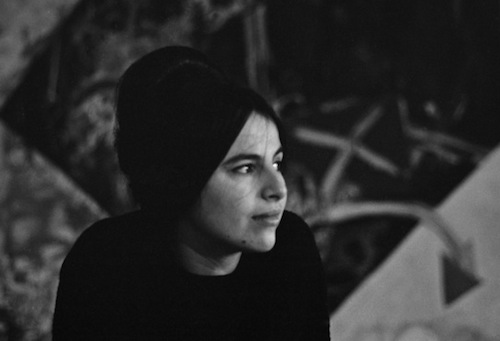|
Reviewed by Paula Farmer Director/Writer: Marcie Begleiter Stars: Selma Blair, Bob Balaban Language: English Run Time: 105 min Eva Hesse had a short but important and impactful career as one of America’s foremost post-war artists. She was way ahead of her time with a style that was all her own - a post minimalist using mixed media such as fiberglass, latex and plastics. This self-titled documentary, chronicles her life- as a young German immigrant to New York who’s family fled the Nazi take over - and her works as one of the first females taken seriously in the modern art world. The film starts slow and a bit dry, but soon enough becomes increasingly more interesting with each phase of her life. It is presented in first-person narration as an actor portraying Eva (Selma Blair) reading aspects from prolific journal entries from childhood until her untimely death in 1970. Mixed in with the narration are interviews with her sister, friends and contemporaries. You get as much from the film about Eva herself as you do about what was going in the New York art world of the 50s and 60s. She socialized with the up-and-coming and established of modern art, including Richard Serra, Sol Lewitt, Jasper Johns and Bob Smithson. She married and divorced sculptor Tom Doyle. Most interesting are the influences of her life for better or worse, and this penetrates the film. While she was married to Doyle and struggling with her art, specifically paintings at the time, Sol Lewitt adored Eva and recognized her talent, helping her to tap into what would become her signature style as a sculptor experimenting with forms and materials. She was also influenced by the feminist teachings of Simon de Beauvoire. This was pivotal in navigating marriage with a successful creative who was a philanderer. These teachings were a source of comfort while she was sometimes the lone female artist surrounded by her high profile male counterparts. Although she did not want to be known as a “female artist,” she was painfully aware of the discriminations in her circle of art and the woefully minuscule representation of art produced by women in shows or reviewed in the press. But as she said, “The way to beat discrimination in art is by art. Excellence has no sex!” And “art” she did. Once she discovered her passion and style, she became prolific, getting noticed and shown in New York galleries and museums, like the Guggenheim. Her success would be short-lived for her to witness. Not long after her first one-woman show, she was diagnosed with brain cancer and began a rapid decline to her death. Throughout her health struggle, she created art and wrote of her experiences. She died at 34 having only a mere decade-long career. Despite its brevity her career was rich and fulfilling, producing intriguing works that defy categorization. The film successfully captures her passions, philosophies, struggles and art.
0 Comments
Leave a Reply. |
AuthorPaula Farmer. Archives
June 2024
Film |

 RSS Feed
RSS Feed